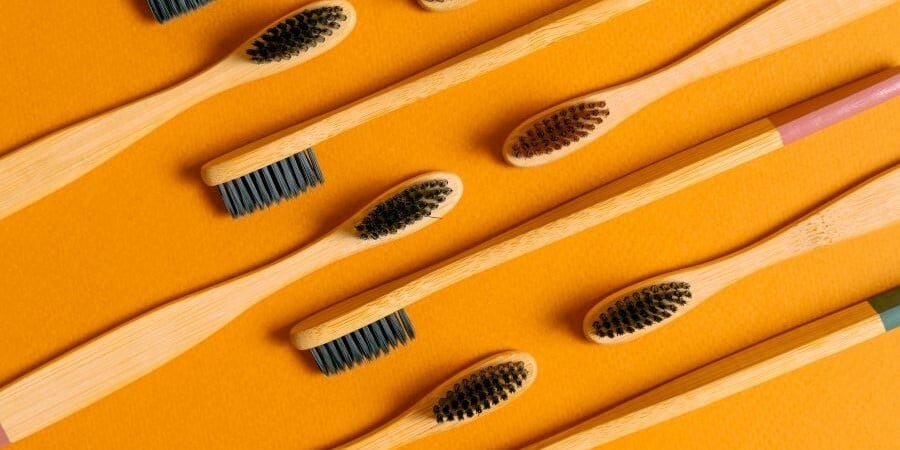Many people think that brushing daily is enough to keep their teeth healthy, but it’s simply not enough to get the job done. Consistent flossing is equally important, according to University of Colorado School of Dental Medicine (CU SDM) faculty Yanira Owens, RDH, MHA, EdD, and Meghan Crow, RDH, MS, MPH.
“Most people don’t understand that when they’re brushing their teeth, they’re only reaching about 60% of their tooth surface, so 40% is missed,” said Crow, assistant professor in the Department of Diagnostic Sciences and Surgical Dentistry. “They need something else to clean between their teeth.”
That’s where string dental floss or other periodontal aids come in. Although string floss has historically been considered the “gold standard” for cleaning between the teeth, other methods can work too. The goal of all flossing aids is to clean the plaque, also called biofilm, which accumulates on the surface of the teeth and gum line.
“Plaque is filled with bacteria, so removal is key — not only to prevent tooth decay (i.e., cavities) but also to prevent periodontal disease, which is disease affecting the gums and bone that support the teeth,” said Owens, assistant professor in the Department of Community Dentistry and Population Health and director of the CU SDM Advanced Clinical Training and Service (ACTS) Program.
Proper Flossing Techniques
Owens and Crow emphasize the importance of cleaning between the teeth at least once daily. More often is even better if people have food stuck in their teeth, they noted.
Simply moving the floss up and down is not thorough enough, however; rather, patients should bend the floss into a C-shape to clean up and down on the side of each tooth as well as underneath the gums.
In addition, it’s important to use a clean section of the floss in between each tooth to avoid spreading bacteria from one tooth to another. “To do that, you should use about 18 inches of floss,” Crow said.
The most ideal time to floss is right before going to sleep.
“We want our teeth as clean as possible because we don’t produce as much saliva when we’re sleeping, and saliva has proteins that protect against decay,” Owens explained. “But if a patient is struggling to fit flossing into their schedule, I suggest they find a time of day that works for them. It’s better than not flossing at all.”
The best type of string floss is one that has a woven texture — like a fine piece of yarn — which is most effective at removing plaque.
“People love dental floss that can pass between their teeth easily, but it’s not as effective because it glides over the plaque instead of grabbing and removing it,” Crow said.
Other Options for Cleaning Between Teeth
Not everyone likes or is able to use string dental floss. Fortunately, there is a range of other options.
Interproximal brushes are one alternative. These consist of a brush at the tip, resembling a tapered pipe cleaner, which is small enough to fit between the teeth. Soft picks are another option. They are thinner than an interproximal brush and have rubber bristles.
“I’m a fan of soft picks in addition to string flossing,” Owens said. “For people who have tighter contacts between their teeth, soft picks can fit nicely in between them.”
“Some people’s hands may be too large for traditional string floss, or they may simply not like putting their hands in their mouths,” Owens added. “For them, water flossers are a great alternative.”
Water flossers have a water reservoir and a wand that shoots pressurized water in between the teeth. Many patients say that they are not as painful as string floss and that they don’t notice bleeding gums as much with them.
“Water flossers can reduce inflammation and get along the gum line all around the tooth,” Crow said. “But you need to make sure that the water flosser’s pounds-per-square-inch (psi) pressure is 60 or above. If it’s endorsed by the American Dental Association, it will meet those metrics.”
To use a water flosser, place the tip at the gum line and pause on each space between the teeth, moving it up and down along the sides. The process should take about a minute, and the water reservoir must be refilled daily, Crow noted.
Toothpicks are yet another cleaning option. They can be convenient for many people, especially for those who may not have the dexterity to handle regular dental floss. If used every day, they can be extremely helpful in removing food particles and surface plaque. They should be placed in and out between teeth and along the gum line. The disadvantage to toothpicks is that they can’t reach under the gum line like dental floss.
Cleaning Around Bridges, Implants and Braces
Any type of dental prosthesis requires special cleaning. These include implants, implant-supported bridges, hybrid dentures and permanent retainers.
A dental bridge consists of crowns on two teeth with one or two engineered, or fake, teeth in between them. Because no space exists on either side of the fake tooth, the bridge can only be cleaned from underneath.
“If you don’t clean underneath the bridge, it can fail,” Owens said.
Floss threaders are one option for flossing underneath bridges. Resembling a sewing needle, floss threaders have a loop through which the floss is threaded. A patient then inserts the threader at the bridge and slides the floss underneath it. Another option is super floss, which can also be used for braces and other areas that are difficult to reach. Super floss consists of three main components: a stiff threader end that can easily slide under dental prostheses or braces, a middle section for cleaning wider spaces, and a regular section for standard flossing between teeth.
A dental implant also requires special flossing. An implant is a titanium screw that is surgically placed into the jawbone to replace a missing tooth. It is then covered by an artificial tooth, which includes a connector piece and a crown. An implant has a different shape than a regular tooth and does not have roots.
To clean between an implant and natural teeth, patients should wrap string floss in a C-shape around the implant. Like a bridge, floss should be used to clean underneath the gum line. Because they’re easy to use, water flossers are another effective option for cleaning implants.
“If you use string floss, pay close attention to if it starts to shred around the implant,” Owens cautioned. “If it does, let your dental provider know right away. Little pieces of floss left behind can become a site for infection, causing the implant to fail.”
Braces, with their many wires and brackets also can be difficult to floss, particularly under the gum line. For that reason, Owens and Crow recommend water flossers as the most effective cleaning method for between the teeth.
Crow and Owens emphasize that no matter what method people choose, they need to add cleaning between their teeth to their daily dental hygiene routine. Otherwise, they may miss 40% of their teeth’s surface, making them vulnerable to multiple problems.
“The key is finding a method you can realistically maintain every day,” Owens said.
The CU School of Dental Medicine is accepting new patients. Schedule your free dental screening exam to get started.





